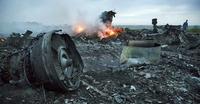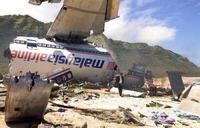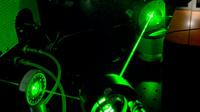-
Photo-ID security checks flawed: Study
Passport issuing officers are no better at identifying whether someone is holding a fake passport photo than the average person, new research has revealed. A pioneering study of Australian passport office staff revealed a 15 percent error rate in matching the person to the passport photo they were displaying. In real life this degree of inaccuracy would correspond to the admittance of several thousand travelers bearing fake passports.
-
-
Airports scrambling to find effective passenger Ebola screening methods
Some airports in Africa have begun screening passengers for Ebola. The current methods involves thermal screening of patients, and then subjecting passengers with an elevated temperature, a symptom of Ebola, to a blood testcalled a polymerase chain reaction test. The test can take eight hours or longer to obtain lab results, and is expensive.Aviation experts recommend screening passengers for Ebola the same way aviation security screen passengers for other threats like terrorism, but say the screening methods must be made to yield results more quickly and cheaply.
-
-
Airports say TSA makes privatizing security screening a challenge
Airport officials described their challenges getting the Transportation Security Administration(TSA) to approve contractors, as part of the agency’s push to privatize more aviation security. The TSA was created to standardize and improve security after 9/11, but the agency’s Screening Partnership Programfor airports allows for private contractors, as long as security levels meet standards set by the TSA.
-
-
Backscatter body scanner making a comeback
Airline passengers have already said bon voyage to the controversial backscatter X-ray security scanners, pulled from U.S. airports in 2013 over concerns about privacy and potential radiation risks. The devices may, however, be reintroduced in the future, in part because they produce superior images of many concealed threats, and Congress still wants to know whether these systems — currently used in prisons, in diamond mines, and by the military — produce safe levels of radiation for screeners and the people they screen.
-
-
Renewed interest in defending civilian airlines raised by MH17 downing, Israel flight ban

The 48-hour ban on international flights to and from Ben Gurion International Airport in Israel was the result of a Hamas rocket landing in Yahud, a small town about a mile-and-a-half from the airport. The likelihood of a rocket fired from Gaza landing on the runways or terminal at Ben Gurion airport is small not only because of the inaccuracy of these rockets, but also because of the effectiveness of Iron Dome, Israel’s anti-rocket defense system. A much greater threat to civilian aviation is posed by surface-to-air missiles – either shoulder-mounted anti-aircraft missiles (or MANPADS, for man-portable air defense systems) or the much more powerful truck-mounted systems such as the SA-11, or BUK system, which Ukrainian separatists used to bring down flight MH17.
-
-
Airlines suspend international flights to and from Israel
With the downing by Ukrainian separatists of the MH17 jetliner as a backdrop, several international airlines on Tuesday have halted their flights to and from Israel. Some airlines said they would reconsider the decision after twenty-four hours, other airlines said the flights would be halted indefinitely. It appears that what triggered the decision was a Hamas rocket which landed in the town of Yahood, about a mile or two from Ben Gurion International Airport.
-
-
Forensic technology could help U.S. prove case against Russia, Ukrainian separatists

Over the weekend, U.S. Secretary of State John Kerry appeared on several media outlets to make a case against Russia for the country’s support of pro-Russian separatists responsible for the downing of Malaysia Airlines Flight MH17. The United States is confident that rebels attacked the airplane with an SA-11 Gadfly 9K37M1 Buk-1M fired missile. For the United States to prove its allegations against Russia and the Ukrainian separatists, Western authorities must first gain full access to the crash site, utilize an arsenal of forensic investigative technology, then gather eye witness accounts. Once the United States can prove its allegations, European partners can then be persuaded to impose tougher sanctions on Russia.
-
-
Tiny laser sensor increases bomb detection sensitivity
New technology under development could soon give bomb-sniffing dogs some serious competition. A team of researchers has found a way dramatically to increase the sensitivity of a light-based plasmon sensor to detect incredibly minute concentrations of explosives. The researchers noted that the sensor could potentially be used to sniff out a hard-to-detect explosive popular among terrorists. The sensor also could be developed into an alarm for unexploded land mines that otherwise are difficult to detect, the researchers said.
-
-
Kerry: All evidence points to separatists; Russia should “step up”
U.S. secretary of state John Kerry said on Sunday that all the evidence related to the downing of Malaysian passenger plane clearly pointed to Ukrainian separatists as the culprits. Kerry appeared on all five major Sunday talk shows to present the administration’s case against the separatists – and Russia — and to call on Russia to pressure the separatists to stop removing key pieces of evidence from the crash scene and stop blocking an investigation into the firing of a surface-to-air missile which brought down the jetliner.
-
-
Malaysian jetliner shot down by pro-Russian Ukrainian separatists
Nine Britons, 23 U.S. citizens, and 80 children are reported to be among the 283 passengers and fifteen crew members killed when an anti-aircraft missile launched by pro-Russian separatists in east Ukraine brought down a Malaysian Airline Boeing 777-200 on its way from Amsterdam to Kuala Lumpur. The plane fell to Earth near the town of Grabovo, about fifty kilometers from the Russia-Ukraine border. The Ukrainian government said the plane was shot down by the Russian Buk missile system as the liner was flying at an altitude of 10,000 meters (33,000 feet).
-
-
Airports resist bolstering perimeter security because of cost
Last month’s security breach at Mineta San Jose Airport, in which a teenager entered the airfield and hid in the wheel well of a Maui-bound flight, has highlighted concerns about the security of airport perimeters. Perimeter intrusions are common at airports, but airports resist pressures to improve perimeter protection because of the costs involved. Experts note that if we were to string all of the U.S. airport perimeters together, we would approach the length of the U.S. border with Mexico and security expenditures approaching a billion dollars. These experts say that airports are not likely to invest heavily in perimeter security until a serious disaster due to lax perimeter security occurs. “Show me a body count, and we’ll build a fence,” said one airport administrator.
-
-
New way to lower risk of midair collisions for small aircraft
Researchers have developed new modifications for technology that helps pilots of small aircraft avoid midair collisions. The modified tools significantly improved pilot response times in making decisions to avert crashes. At issue are “cockpit displays of traffic information” (CDTIs). These are GPS displays used by private pilots to track other aircraft in their vicinity. However, pilots often focus on the closest aircraft on the display — a habit that can pose a significant hazard.
-
-
Converting light to sound for better weapons detection, medical imaging
A device that essentially listens for light waves could help open up the last frontier of the electromagnetic spectrum — the terahertz range. So-called T-rays, which are light waves too long for human eyes to see, could help airport security guards find chemical and other weapons. They might let doctors image body tissues with less damage to healthy areas. They could also give astronomers new tools to study planets in other solar systems. Those are just a few possible applications.
-
-
TSA expands PreCheck screening program to international airlines
The TSA is expanding its PreCheckscreening program to passengers on international airlines. Air Canada is the first international carrier to join the list of PreCheck carriers, which already includes several U.S. airlines.Some international airlines are reluctant to join the PreCheck carrier list because it entails upgrading their computer systems to print a PreCheck logo and embed PreCheck data in their boarding pass barcodes. With Air Canada joining the list, the TSA believes other foreign carriers with a large U.S. passenger base would benefit if they offered PreCheck status to their customers.
-
-
Using light to detect trace amounts of explosives

Researchers may help in the fight against terrorism with the creation of a sensor that can detect tiny quantities of explosives with the use of light and special glass fibers. The researchers describe a novel optical fiber sensor which can detect explosives in concentrations as low as 6.3 ppm (parts per million). It requires an analysis time of only a few minutes.
-
- All
- Regional
- Water
- Biometrics
- Borders/Immig
- Business
- Cybersecurity
- Detection
- Disasters
- Government
- Infrastructure
- International
- Public health
- Public Safety
- Communication interoperabillity
- Emergency services
- Emergency medical services
- Fire
- First response
- IEDs
- Law Enforcement
- Law Enforcement Technology
- Military technology
- Nonlethal weapons
- Nuclear weapons
- Personal protection equipment
- Police
- Notification /alert systems
- Situational awareness
- Weapons systems
- Sci-Tech
- Sector Reports
- Surveillance
- Transportation
Advertising & Marketing: advertise@newswirepubs.com
Editorial: editor@newswirepubs.com
General: info@newswirepubs.com
2010-2011 © News Wire Publications, LLC News Wire Publications, LLC
220 Old Country Road | Suite 200 | Mineola | New York | 11501
Permissions and Policies
Editorial: editor@newswirepubs.com
General: info@newswirepubs.com
2010-2011 © News Wire Publications, LLC News Wire Publications, LLC
220 Old Country Road | Suite 200 | Mineola | New York | 11501
Permissions and Policies
